China’s Anti-missile System Debuts, Crushing US Nuclear Deterrence
In the eyes of Chinese military enthusiasts, the various missile defense interceptor systems of China’s Air Force space defense units are even more mysterious than fifth-generation fighter jets. Not a single photo has been seen, missile defense tests can only be inferred by observing the night sky, and even the model numbers of these interceptor systems remain unknown.
The lack of clarity around model numbers has led to a variety of nicknames. For example, around this time in 2022, military media showcased a certain air-defense missile defense system from the Air Force. During the broadcast, the launch footage was accompanied by the phrase “Gongwei Jingji Dadi” (protecting the capital region), which inspired military enthusiasts to give this interceptor system the nickname “Gongwei Jingji Dan” (Capital Guardian Missile).
Unexpectedly, two years later, the “Capital Guardian Missile” made its official debut at the 15th Zhuhai Airshow. This time, it was unveiled with its official model name—”HQ-19.”
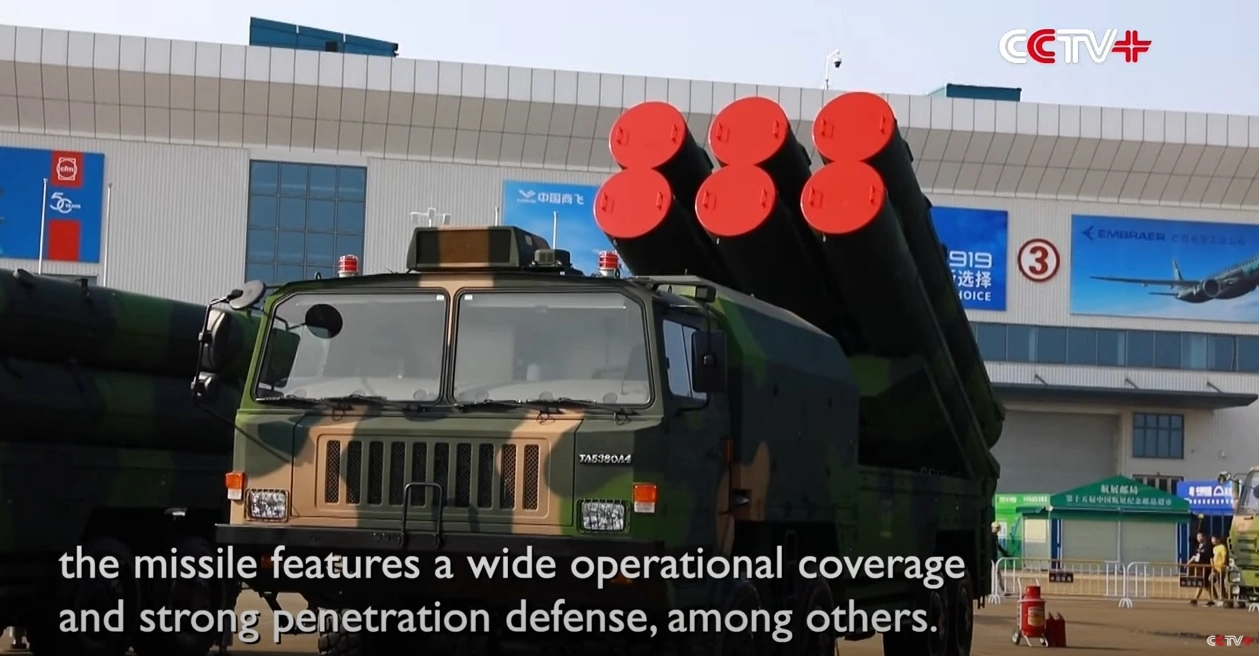
This is the HQ-19 missile defense interceptor system—rumored for years but never confirmed until now—whose unveiling has made waves worldwide. It’s also the first missile defense interceptor system (not an air defense system) that the Chinese Air Force has publicly showcased.
The HQ-19’s launch system
Let’s begin by analyzing the design and system configuration of the HQ-19 launch vehicle. The HQ-19 interceptor missile system uses a 4-axle off-road chassis, featuring a front driving cabin, a central equipment or control cabin, and a rear section equipped with two sets of six HQ-19 interceptors. The interceptor elevation mechanism employs an integrated lift system.
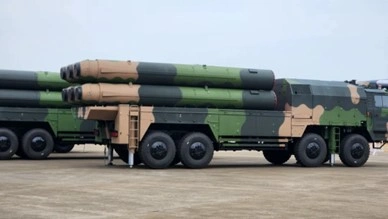
It appears that compared to the hydraulic actuator used in the HQ-9 surface-to-air missile system, the HQ-19’s integrated elevation system is considerably more robust. The interceptor launch tube has a notably large diameter, likely around 40 centimeters. This suggests that the HQ-19 interceptor itself has a similar diameter of about 40 centimeters. Additionally, there are reinforcing ribs on the sides of the launch tube, and the rear is fitted with a black rubber block, enhancing the missile’s adaptive launch capability.
Notably, after being elevated on-site, the HQ-19 does not launch vertically but at a slight angle, which is a clear difference from the vertical launch of the HQ-9B. This angled launch aligns with the features observed in the 2022 video of the “Capital Guardian Missile”.
As for why the HQ-19 doesn’t use the classic vertical launch of air defense missiles and instead launches at a slight angle, our channel’s view is that it’s due to its use of a cold-launch method. Given the high cost of this advanced equipment, if the interceptor missile fails to ignite after ejection, it’s crucial for it to fall safely to a designated area rather than back onto the launch vehicle, which could risk detonating the remaining interceptors onboard.
Additionally, compared to the HQ-9B, which is designed to counter primarily aerodynamic targets, the HQ-19 is intended to intercept ballistic missile threats, which have a more predictable attack trajectory. There is no need to counter multi-directional threats. Therefore, using an inclined launch system is more in line with the operational requirements than a vertical launch method.
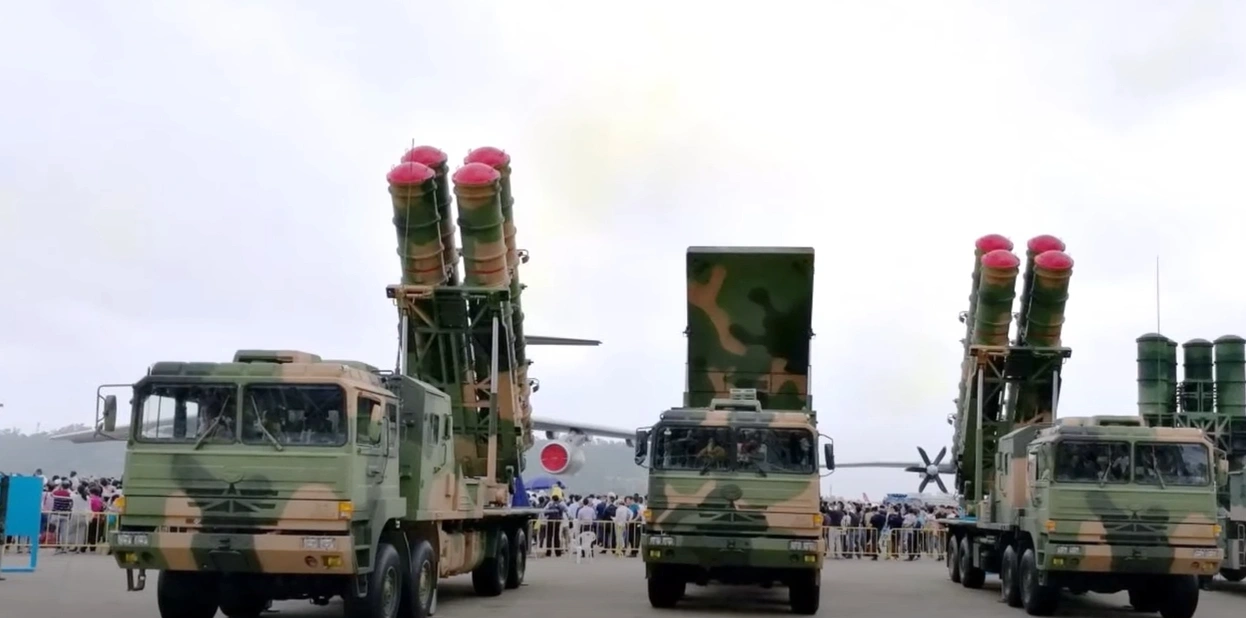
From the full system configuration of the HQ-19, the Chinese Air Force displayed two HQ-19 launch vehicles at the airshow, but the supporting command cabin, long-range warning radar, and fire control radar remain unclear. Two radar systems observed at the exhibition, the 610A warning radar and 780 fire control radar, have been identified by analysts as likely being the long-range warning radar and fire control radar for the HQ-19, respectively.
However, these two radar systems (or their earlier versions) were already showcased at the previous airshow and are not new exhibits. Furthermore, the descriptions on the display boards for these radars primarily focus on detecting aerodynamic targets, with ballistic missile targets and near-space vehicles being secondary considerations.
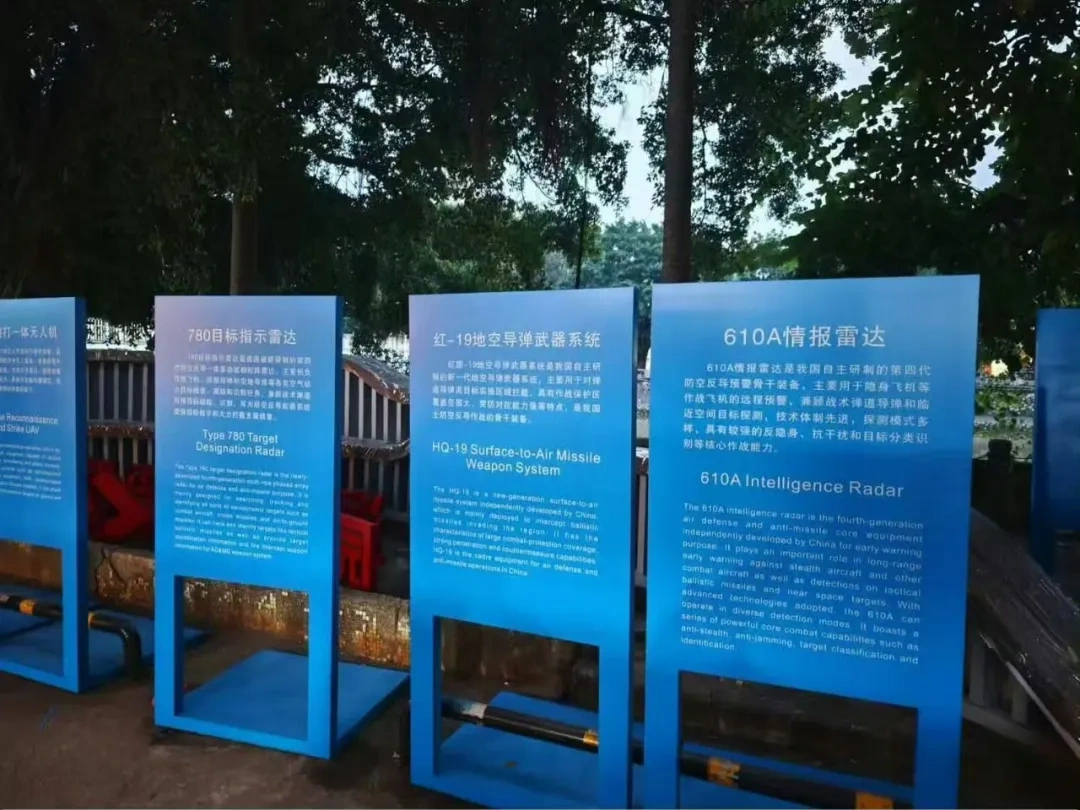
As we know, the HQ-19 is not designed to intercept aerodynamic targets, and such an expensive system would not be used for that purpose. It is a system specifically specialized for intercepting ballistic missiles and hypersonic vehicles. Therefore, the radar systems for early warning and fire control in the HQ-19’s anti-missile interception system remain a mystery.
The HQ-19’s Missile
The diameter of the HQ-19 interceptor missile appears to be similar to that of the Hongqi-9C small-diameter missile. However, the HQ-19 launch vehicle is capable of carrying six interceptors, which exceeds our expectations. Previously, we pessimistically estimated that the HQ-19 could carry only three missiles per vehicle, or at most two if we were more conservative. But now, it turns out that one vehicle can carry six.
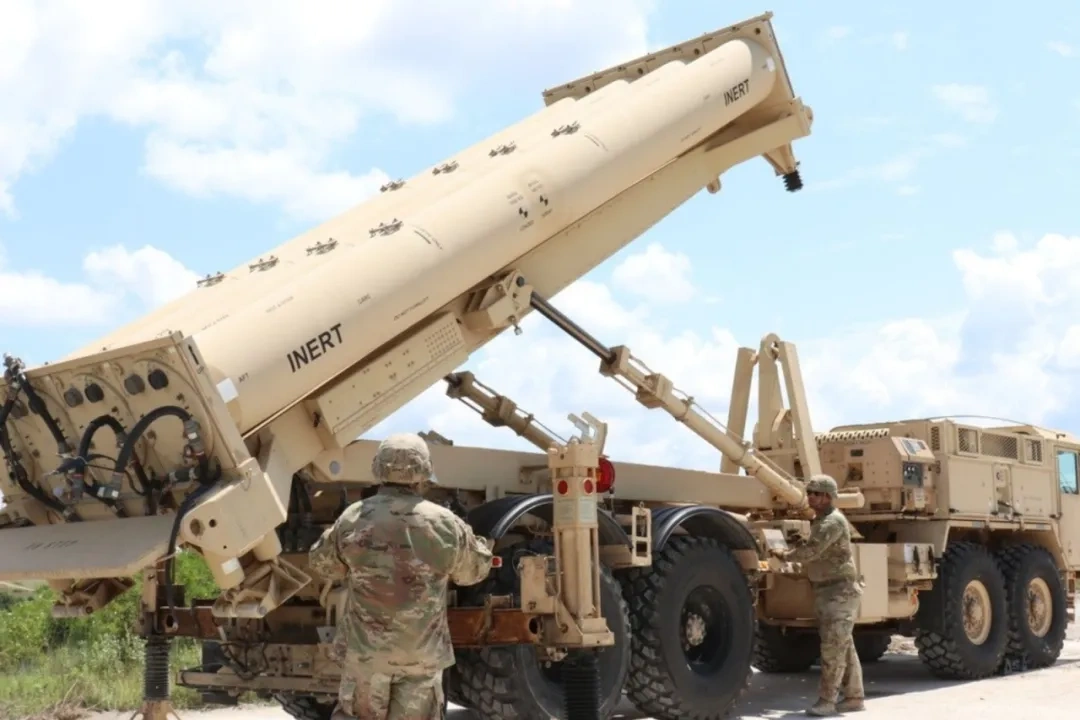 The United States’ THAAD missile defense system
The United States’ THAAD missile defense system
If THAAD-ER could truly be developed by the Americans, it would have been at this level. However, this is not that surprising.
First, the design of ballistic missile interceptors differs from that of air defense missiles. Air defense missiles need to counter aerodynamic targets, which requires stabilizing surfaces to ensure stability when flying in the lower atmosphere. However, ballistic missile interceptors do not need to consider this issue. Their operational range is not in the lower atmosphere; after launch, they quickly accelerate into near space before engaging and maneuvering. Therefore, ballistic missile interceptors often do not require tail fins, essentially saving space in the launch tube that would have been used for the installation of tail fins.
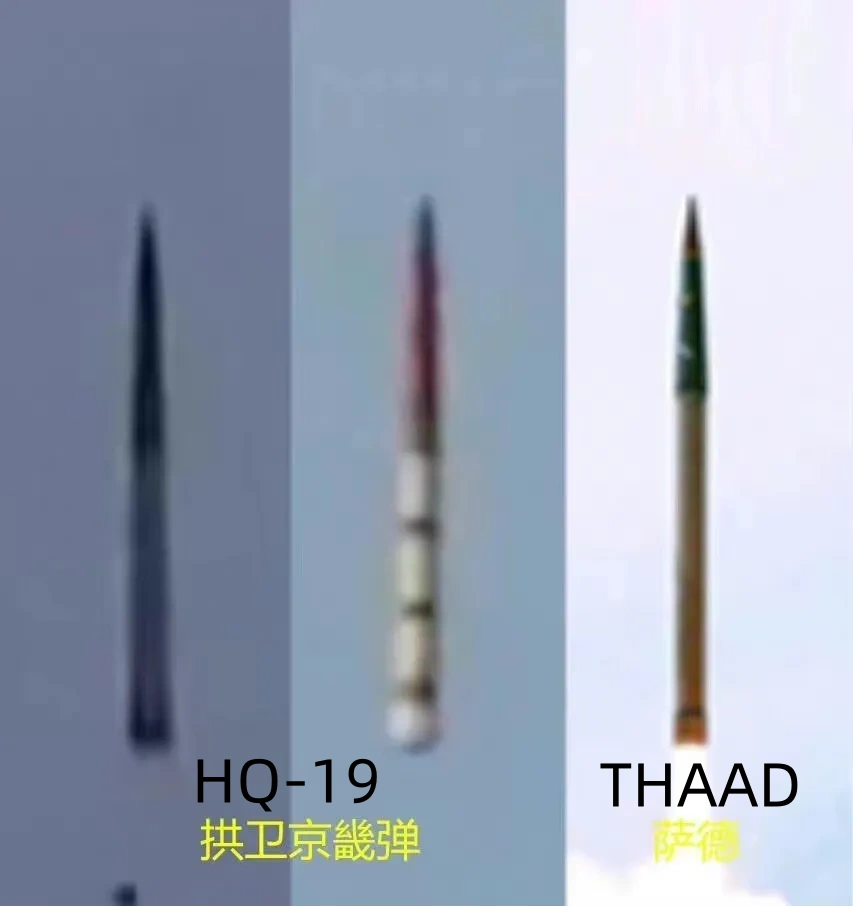 Comparison of HQ-19 and THAAD interceptor missiles
Comparison of HQ-19 and THAAD interceptor missiles
Secondly, the missile body of a ballistic missile interceptor may not actually be larger than that of an air defense missile. The warheads of the two types of missiles differ. Air defense missiles often use continuous rod warheads or high-explosive fragmentation warheads, and to ensure an effective kill radius, the warhead weight can often reach around 100 kilograms.
For example, the U.S. RIM-174 Standard-6 missile uses the MK-125 high-explosive fragmentation warhead, which weighs 125 kilograms, and the total missile weight is 1,497 kilograms. However, the Standard-3 Block 1B, which is a ballistic missile interceptor, has a launch weight of 1,501 kilograms. It uses a kinetic energy intercept warhead, which weighs only 23 kilograms. The lighter the warhead, the lighter and smaller the missile body can be designed accordingly.
At the same time, ballistic missile interceptors use more advanced materials and propellant formulations compared to regular surface-to-air missiles. For example, they can utilize carbon fiber composite wound casings and high-density, high-burn-rate N15B high-performance propellants, which help reduce the structural weight of the interceptor.
By improving the propellant’s specific impulse and using a very small warhead weight, the size of a ballistic missile interceptor is not necessarily larger than that of a conventional surface-to-air missile. The fact that the HQ-19 can carry six interceptors on one vehicle suggests that China has deep expertise in the design of both air defense missiles and ballistic missile interceptors.
The Mission of HQ-19
Since the design of the HQ-19 interceptor is highly advanced, what mission does it undertake? We can only guess based on the target missiles that the HQ-19 has previously engaged.
We all know that the interception capability of an interceptor missile depends, to some extent, on its shut-off speed. Interceptors are unlikely to intercept targets that are faster than their shut-off speed. This was clearly demonstrated during the ballistic missile attack by Iran on Israel last month.
For example, the U.S. THAAD missile defense system claims that its interceptor missile has a shut-off speed of 2800 meters per second. This shut-off speed is generally sufficient to intercept medium-range ballistic missiles with a range of up to 3,000 kilometers.
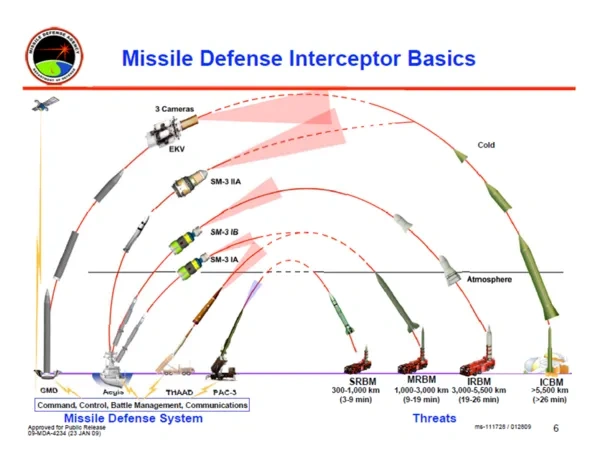 Comparison of interceptor ranges of different missile defense interceptor systems
Comparison of interceptor ranges of different missile defense interceptor systems
In contrast, the U.S. Navy’s sea-based Standard-3 Block 1B interceptor has a shut-off speed of around 3,500 meters per second, allowing it to intercept medium-range ballistic missiles with ranges exceeding 3,000 kilometers. The Standard-3 Block 2A’s shut-off speed reaches approximately 5,500 meters per second, giving it the capability to intercept intercontinental ballistic missile (ICBM) targets.
The performance of the HQ-19 is likely between that of Standard-3 Block 1B and Standard-3 Block 2A, meaning it could be equivalent to the THAAD-ER that the U.S. has only planned but not developed. It is capable of conducting end-phase high-altitude interception against ballistic missiles with a range of approximately 5,000 kilometers.
China’s future air and space defense system
Finally, let’s talk about China’s current air defense and missile defense interception system. With the appearance of the HQ-19 missile interceptor, a new piece has been added to the puzzle of China’s air and space defense strategy and tactics.
Currently, the HQ-19 is likely tasked with intercepting mid-course and terminal high-altitude missile defense. The HQ-9B and HQ-9C are tasked with intercepting aerodynamic targets as well as medium- to short-range ballistic missiles. The HQ-11, along with various anti-drone systems, electro-optical countermeasures, and others, are responsible for point defense at critical locations, countering drones, and other small targets. As for the HQ-16 and HQ-17, they belong to the ground-based air defense sequence rather than the air force combat sequence.
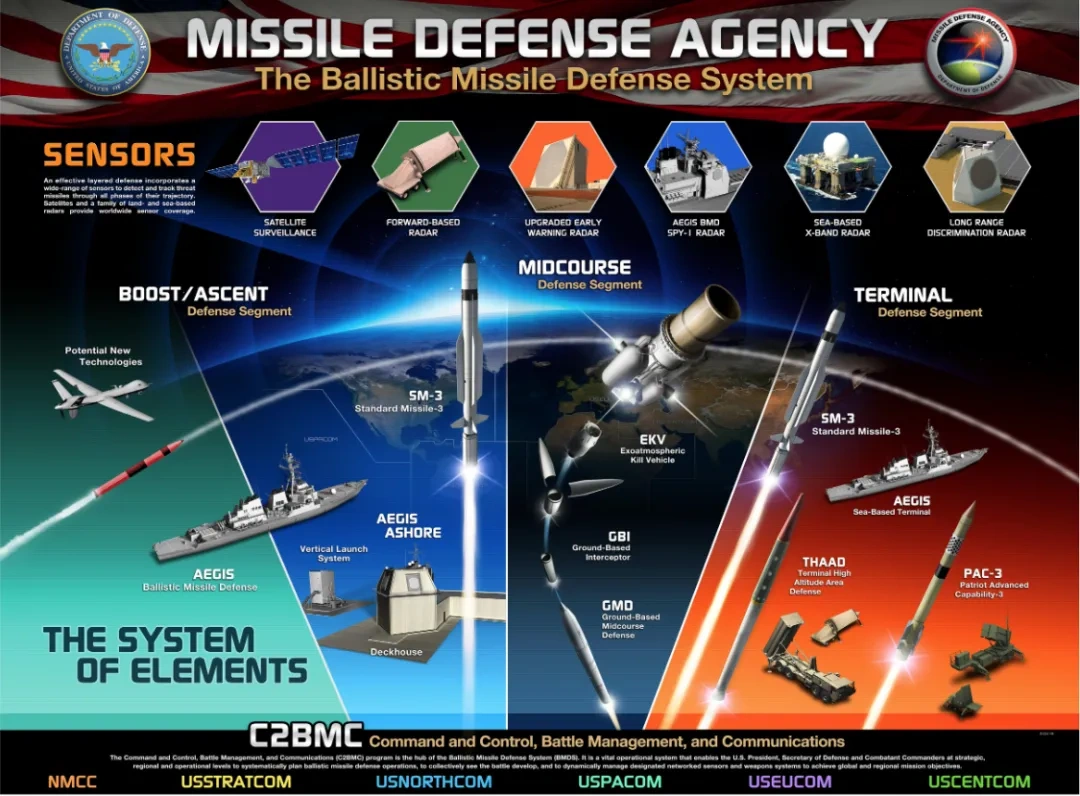 Diagram of the U.S. air and space defense system
Diagram of the U.S. air and space defense system
So, what does China’s air and missile defense system still lack? Looking at the U.S. Air and Missile Defense Forces’ equipment system, the U.S. relies on the land-based midcourse GBI, land-based high-altitude THAAD, land-based terminal-phase PAC-3 MSE, land-based terminal-phase PAC-2 GEM+, and the sea-based Standard-3 and Standard-6 series to form its missile defense interception system.
Currently, China’s HQ-9B/C is clearly more advanced than the PAC-2 GEM+, but there is still a gap when compared to the PAC-3 MSE. Therefore, it will be necessary to develop equipment similar to the PAC-3 MSE in the future. As for a product similar to the GBI, China likely has one, though it has not been made public.
What China is still lacking significantly in is the sea-based missile defense interception system. The Standard-6 is roughly equivalent to the HQ-9B, but China currently does not have a sea-based version of the Standard-3. However, from the appearance of the HQ-19, there is no problem deploying it on warships.
The only area that needs improvement is whether the 346 series radar on the Navy’s air defense ships can meet the requirements for missile defense interception combat. Is there a need for a sea-based dedicated missile defense radar, or should the land-based missile defense radar adopt a long-range engagement mode to guide the Navy’s air defense ships for cooperative or integrated combat? This may be a key focus for the development of China’s naval missile defense capabilities in the coming period.




